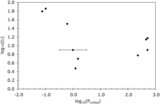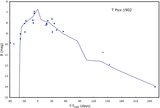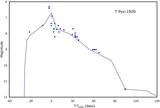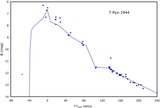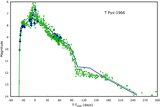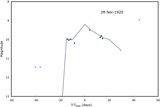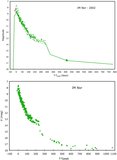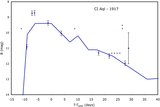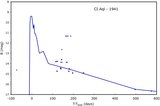Image Details

Caption: Figure 21.
T CrB in 1866. At this early date, we have only V-band photometry (diamonds). The one limit (empty triangle) just before the discovery by J. Schmidt sharply constrains the time and magnitude of the peak. The well-known, poorly understood, and unique property of the light curve is that the fast nova event is followed by roughly 50 days at the quiescent level followed by a several month rebrightening. The rebrightening gets above eighth magnitude and has comparable total energy to the initial fast nova event. There is a series of magnitude estimates from day 21 to 80 by a single observer that lies above everyone else by about 1 mag, and this is certainly some sort of an error. During the rebrightening, the light curve as observed by various people lies systematically above the V-band template as constructed from the 1946 light curve, and this is likely simply due to the known long-term variations in the red giant companion star.
Copyright and Terms & Conditions
© 2010. The American Astronomical Society. All rights reserved.


